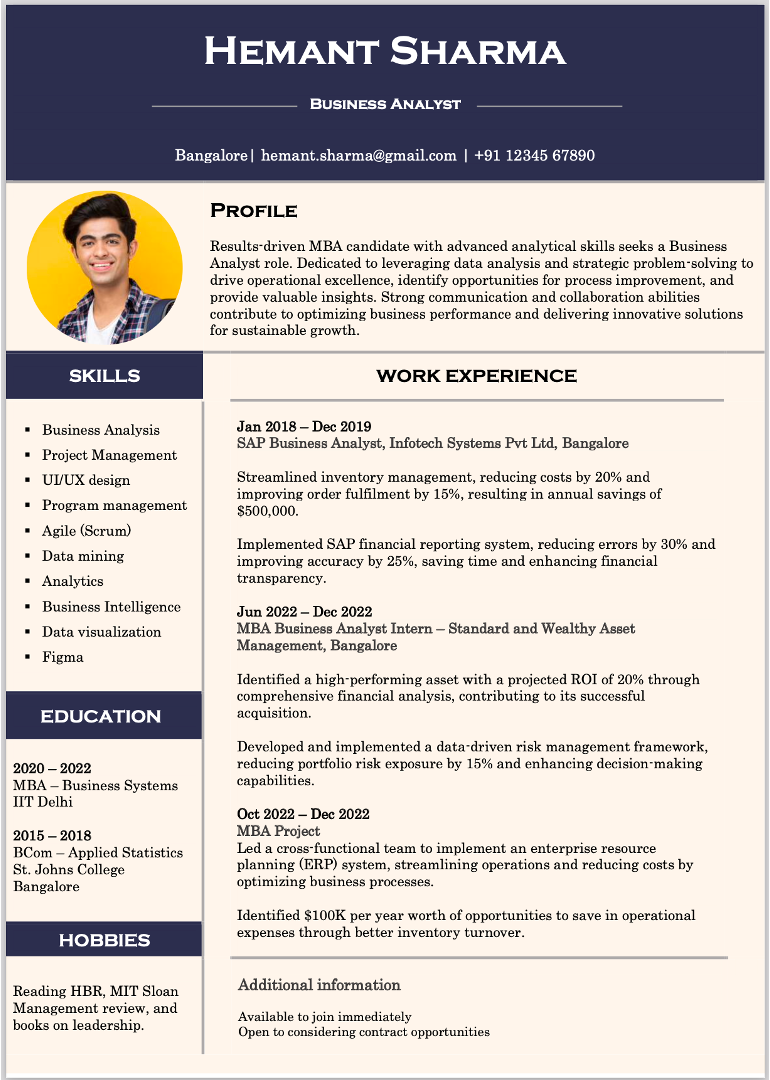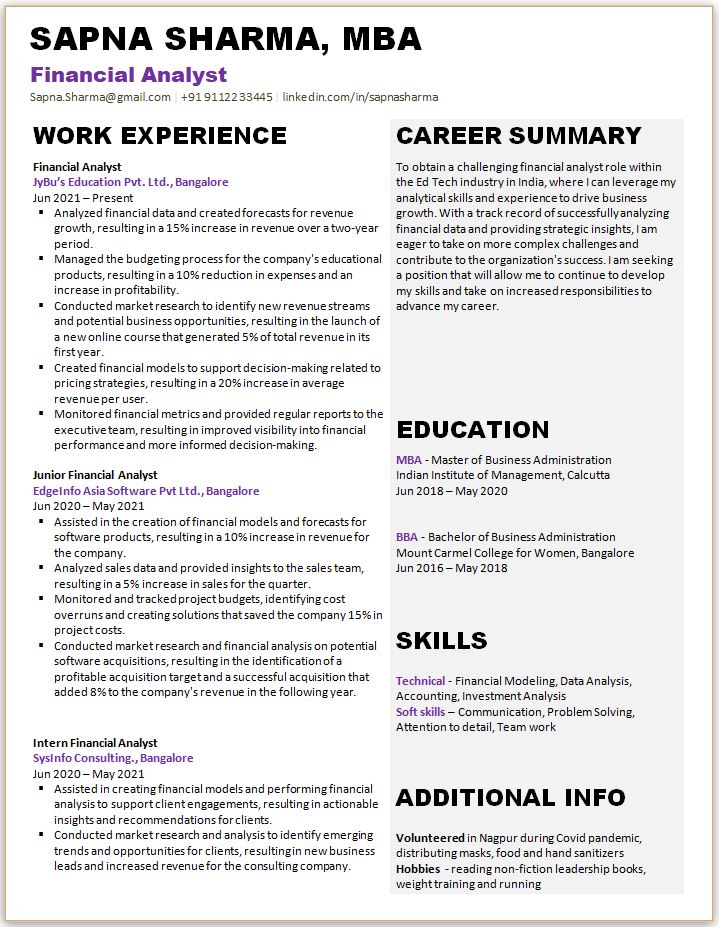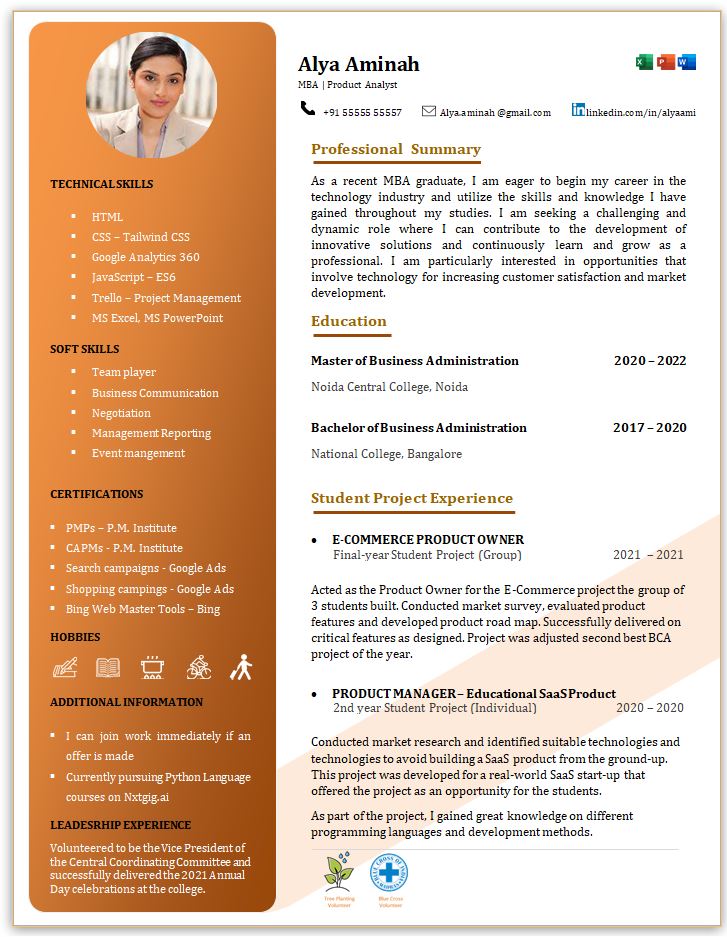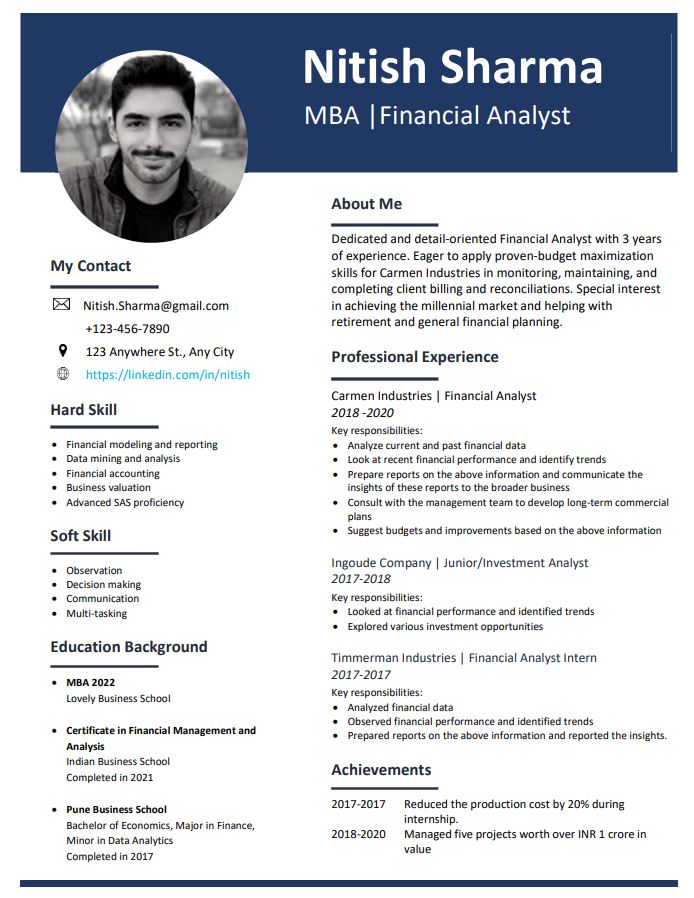Resume formatting demystified
(+ free examples)

05 Feb 2024

How to format your resume in 2024
A well-crafted resume is crucial for catching the attention of potential employers. It serves as your personal marketing tool, showcasing your skills, experiences, and qualifications. While the content of your resume is important, the way it is formatted can significantly impact its effectiveness. A poorly formatted resume may not only fail to impress hiring managers but could also hinder your chances of landing an interview. In this blog post, we will demystify resume formatting and provide you with strategies to create a professional and polished resume that stands out from the crowd.
Your resume is often the first impression you make on employers, and a visually appealing and well-organized format can leave a lasting positive impact. Effective resume formatting helps highlight your strengths and accomplishments, making it easier for employers to quickly grasp your qualifications. It ensures that your key information is presented in a logical and easy-to-read manner, facilitating a seamless review process for recruiters and hiring managers who often have limited time to evaluate numerous resumes.
The resume also serves as a tool for networking and professional presentation. MBA graduates often participate in career fairs, networking events, and recruitment activities. A well-crafted resume makes a positive impression on industry professionals, recruiters, and alumni, facilitating valuable connections, internships, and job interviews. By showcasing achievements, highlighting tangible results, and presenting a polished, error-free resume, MBA graduates demonstrate their professionalism and attention to detail.
By mastering resume formatting, you can create a document that not only looks professional but also effectively communicates your value as a candidate. Proper formatting enhances the readability of your resume, enabling employers to quickly identify your relevant skills and experiences. It helps guide the reader's attention to the most important sections and details, ensuring that your achievements and qualifications are front and center. In the competitive job market, a well-formatted resume can make all the difference in securing interviews and advancing your career aspirations.
In the following sections, we will delve into the key strategies for effective resume formatting, including structuring your resume, optimizing readability, highlighting key information, and leveraging online tools and templates. With these insights and actionable tips, you will be well-equipped to create a professional and polished resume that stands out to employers in today's competitive job market.
1. Start with a Clear and Consistent Structure
Begin by organizing your resume with a clear and consistent structure. Use headings, subheadings, and sections to categorize your information effectively. Common sections include "Professional Summary," "Work Experience," "Education," and "Skills." Keep the structure consistent throughout your resume to maintain a professional appearance.
When structuring your resume, consider the order of sections based on what is most relevant to the job you're applying for. If you have extensive work experience, place that section before your education. On the other hand, if you're a recent graduate or changing careers, highlighting your education or relevant coursework may be more beneficial. Tailor the structure of your resume to highlight your strengths and align with the needs of the position.
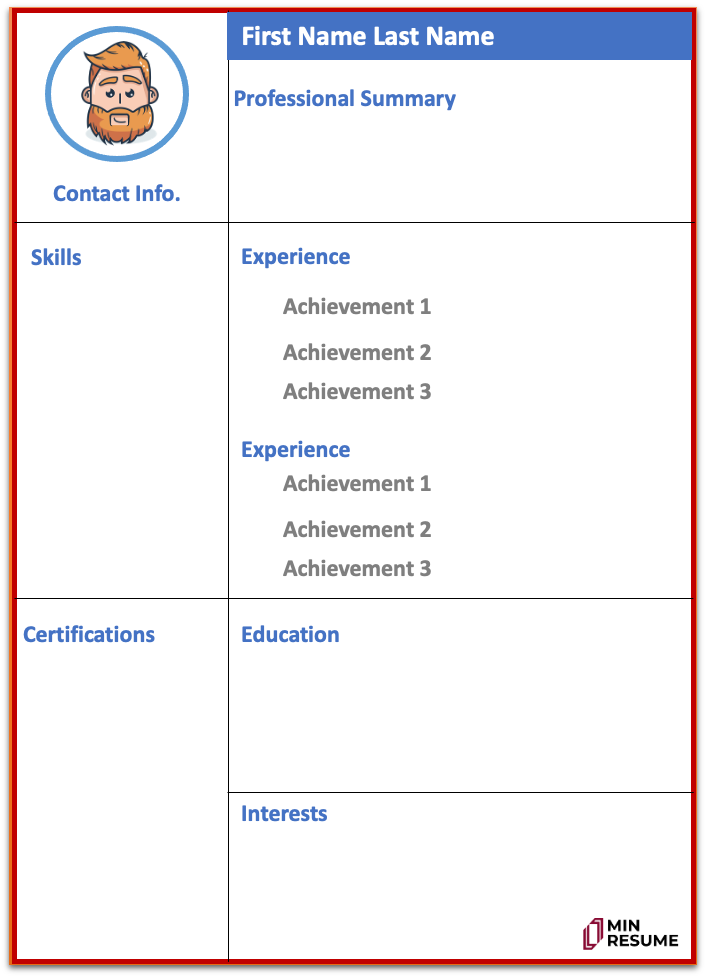
2. Optimize Readability with Proper Font and Formatting
Choosing the right font and formatting is essential for enhancing readability. Select a clean and professional font such as Arial, Calibri, or Times New Roman. These fonts are widely accepted and easy to read on various devices. Additionally, use a font size between 10 and 12 points for the main content and slightly larger for headings to ensure legibility.
Consistency in formatting is key to creating a polished resume. Maintain consistent spacing and alignment throughout the document. Use appropriate margins to provide ample white space, which improves readability and prevents the resume from feeling cluttered. Justify your text or align it to the left for a clean and professional appearance.
Best fonts for resume writing
Some resume fonts might look fancy and visually appealing when seen in a small sentence, but can become very difficult to read when put together on a document that runs along and across into several small sections with varying font sizes and colors. Your best bet is to stick to conventional fonts auch as Times New Roman, Arial and Calibri etc. Here is a list of best fonts most suitable for your resume, showing how your career objective statement would look in different fonts.
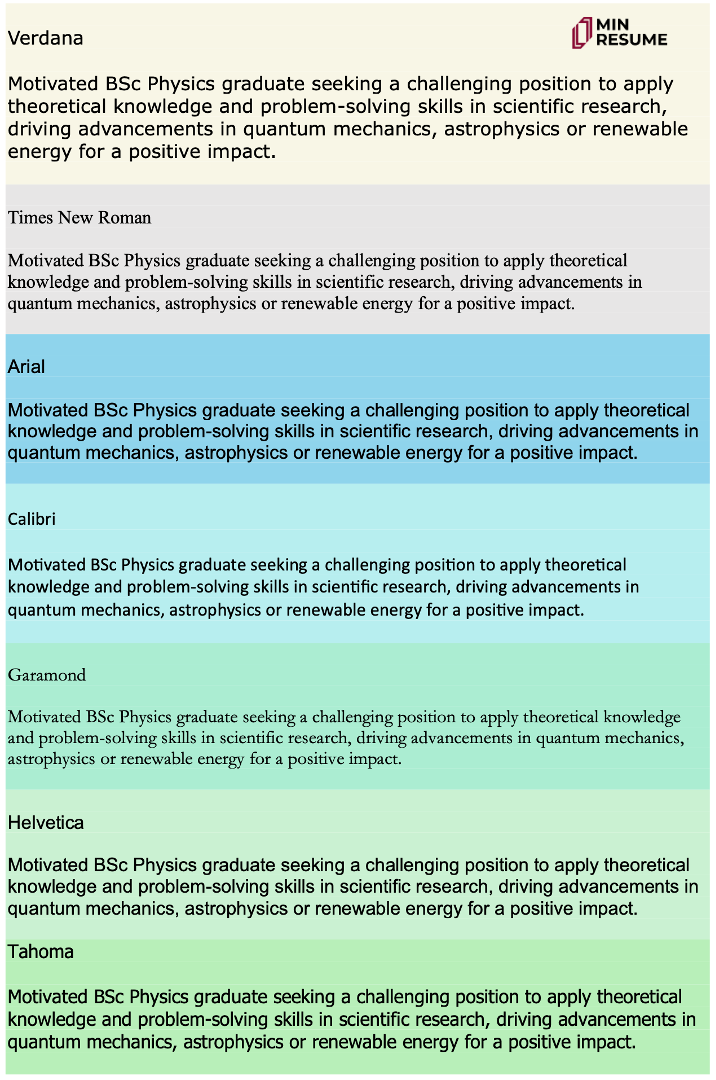
3. Highlight Key Information with Strategic Formatting
Strategic formatting helps draw attention to essential information on your resume. Use techniques such as bolding, italics, and underline sparingly to emphasize critical details. For example, you can bold your job titles and company names to make them stand out, or italicize specific certifications or course names. This formatting technique guides the reader's eyes and helps them quickly identify key sections and accomplishments.
While formatting can enhance your resume, it's important not to overdo it. Excessive use of formatting can make your resume appear cluttered and unprofessional. Reserve formatting for significant achievements, relevant keywords, and key sections, while keeping the overall design clean and readable.
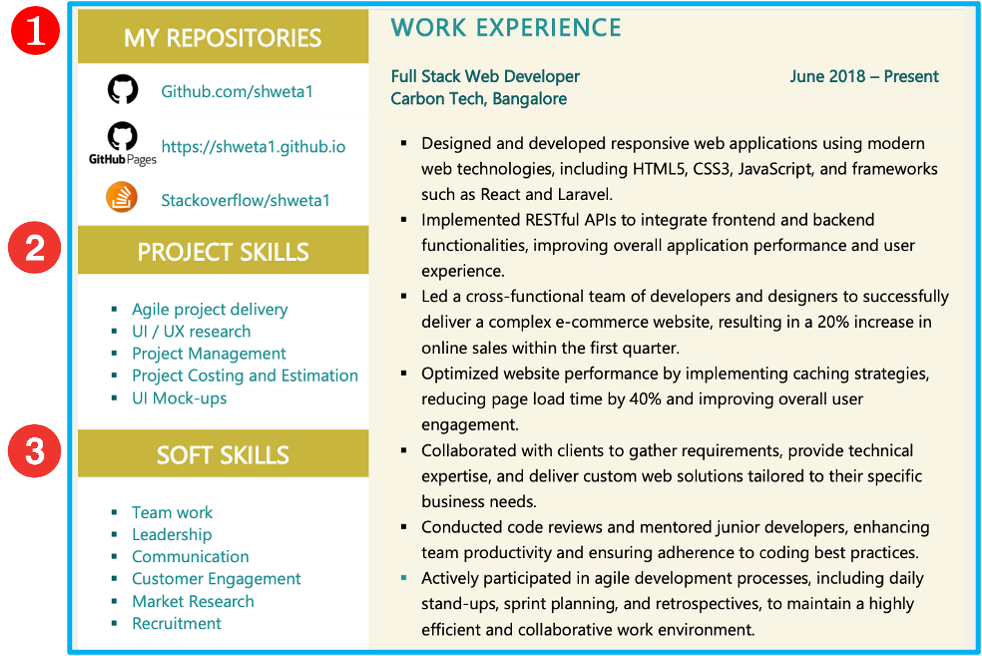
You can see in the snapshot of a great resume, how the candidate has clearly highlighted key sections in her resume.
1. Repositories: If you are in a technical domain where you create or develop - be it designs, product prototypes, essays, articles, etc... you should consider including a bunch of respositories where the recruiter can see your creations. This example is from a Web Developer resume so the candidate shows repositories with the links so the recruiter can click and view them easily. A side point here is if you are in a technical domain and if you don't have respositories yet in the public domain, you are better off slowly creating a couple of them.
2. Project Skills: You can see the candidate has spearated her skills into two sections: Project skills and Soft Skills. Basically, it is a good idea to show techncial skills and soft skills separately. You could wonder why this candidate didn't call this section Technical Skills; knowing this resume well, we know this candidate already has a separate section full of logos of the technonologies she is good at. So, if you are a project manager, you can call the technical skills Project Management Skills, and if you are an Automotive components Designer, call it Design Skills, etc. Naming appropriately on a key word that you find on the job description abd separating key technical skills from generic soft skills immediately highlights your technical depth and will help catch the recruiter's attention quickly.
3. Soft Skills: Even for hardcore technical jobs like web development, etc. soft skills have become an integral part of screening and assessment processes, so it is important that you highlight the soft skills that are most occuring on the job description. If the job description mentions team work and leadership a lot, you should consider including them in the list of soft skill, well, assuming you are feeling confident that you possess them, of course.
4. Create an Impactful Professional Summary or Objective Statement
Your professional summary or objective statement is a concise introduction that captures the attention of hiring managers. Craft a compelling statement that highlights your relevant skills, experiences, and career goals. Tailor this section to align with the specific job you're applying for, emphasizing the value you can bring to the role.
In your professional summary or objective statement, focus on your unique selling points and what sets you apart from other candidates. Use action-oriented language to convey your capabilities and achievements. By crafting an impactful summary, you create a strong first impression and encourage employers to delve further into your resume.
5. Use Bullets and Formatting for Achievements and Responsibilities
When describing your work experience and accomplishments, use bullet points to enhance readability and highlight key details. Begin each bullet point with a strong action verb to convey your responsibilities and achievements in a concise and impactful manner. Focus on quantifiable achievements whenever possible, such as increasing sales by a certain percentage, leading a successful project with specific outcomes, or receiving recognition for your contributions.
The resume templates we have created all follow these simple guidelines. If you have not checked them out, take a look at Resume Formats
In addition to bullets, consider utilizing formatting techniques such as bold or italics to draw attention to significant achievements or standout responsibilities. This helps break up the text and allows employers to quickly scan and grasp the key points of each position.

My one more tip is that you do not spend a lot of the space on your resume, listing responsibilities - it can be best 1 sentence of two lines. The most of the space under your work experiences should be dedicated to achievements. Same goes for fresh colege graduate resumes - when listing your internship or projects, focus on including what you achieved during your internship and projects rather than listing down only your roles and responsibilities.
The example resume you see here is a great illustration of how to include work achievements under work experience section. The candidate focuses on achievements rather than listing down responsibilities. You can also see how well the candidate has quantified the benefits. Do not include quantified benefits that you are contractually obligated not to reveal from past professional engagements. Depending on the sensitivity, some organizations might want you to refrain from putting down on your resume specific details such as sales, revenue, marketing expenditure, etc.
6. Utilize White Space and Proper Margins
White space refers to the empty space between sections, paragraphs, and lines of text. It plays a crucial role in enhancing the visual appeal and readability of your resume. Avoid cramming too much information into a limited space, as it can make your resume appear cluttered and overwhelming.
Ensure adequate margins around the content to create a balanced and visually pleasing layout. The standard margin size is typically 1 inch on all sides. Slightly wider margins can be used if you need more space for white space or if you have additional information to include.
7. Customize Your Resume for Each Application
Tailoring your resume for each job application is essential to demonstrate your fit and interest in the specific role. Customize the content, keywords, and even the formatting to align with the requirements and preferences of the job posting. This shows employers that you have taken the time to understand their needs and showcases your attention to detail.
Review the job description carefully and incorporate relevant keywords and skills throughout your resume. This helps your resume pass through applicant tracking systems (ATS) and increases your chances of getting noticed by human reviewers. Additionally, adjust the order and emphasis of your sections based on the job requirements, placing the most relevant information prominently.
8. Seek Feedback and Proofread Thoroughly
Before finalizing your resume, seek feedback from trusted friends, mentors, or career advisors. They can provide valuable insights, identify areas for improvement, and offer suggestions to enhance your resume's formatting and content. Another set of eyes can catch errors, inconsistencies, or unclear information that you may have overlooked.
Once you have made the necessary revisions, proofread your resume thoroughly to ensure it is error-free. Spelling mistakes, grammatical errors, or formatting inconsistencies can create a negative impression on employers. Use spell-check tools, read the document aloud, and consider asking someone else to review it as well.
Having a friend proof-read your resume can be very beneficial. You can return the favor by proof-reading their resume.
Remember, content wins ayday over a great template. So as much as you focus on the style and formatting your resume, do not ignore the quality of the content. A high quality content does not mean degrees and certifications from top universities; a high quality resume just means it captures very well for easy reading all the competencies the candidate has to offer. By thoughtfully considering and expanding on these sections in your resume, you can effectively highlight your qualifications, experiences, and achievements to impress potential employers and increase your chances of securing job interviews in the competitive job market.
We have put together a variety of resume templates for use from recent colelge graduats to experienced professionals, helping highlight technical skills, project experiences and hobbies and interests. You can see some of them below.
Ready to use MBA Resume Samples
Despite a great resume why recent graduates don't get interview calls
As recent graduates enter the competitive job market armed with their newly minted degrees and impressive resumes, they often find themselves facing a frustrating reality: despite their best efforts, they struggle to receive interview calls from prospective employers. It can be disheartening and raise questions about what might be going wrong. In this blog post, we will explore some possible reasons why recent graduates may not be getting interview calls, despite having what they believe to be a great resume.
1. Lack of ExperienceOne of the most common challenges for recent graduates is the lack of professional experience. While their educational achievements are important, many employers prioritize candidates with practical experience in the field. It's essential for recent graduates to highlight any internships, part-time jobs, or volunteer work they have undertaken during their studies to demonstrate their practical skills and dedication.
How to overcome lack of experienceConsider gaining relevant experience through internships, part-time jobs, or volunteer work while still in school or shortly after graduation. Highlight these experiences on your resume, emphasizing the skills and responsibilities you gained.
2. Limited NetworkingNetworking plays a vital role in securing job opportunities, yet recent graduates often underestimate its importance. Building connections within their desired industry can open doors to job openings that might not be publicly advertised. Graduates should actively attend industry events, join professional associations, and leverage online platforms like LinkedIn to connect with professionals in their field.
How to Overcome Limited NetworkingAttend industry events, job fairs, and networking mixers to connect with professionals in your field. Join relevant professional associations and engage in online networking through platforms like LinkedIn. Be proactive in reaching out and building relationships with people who can offer guidance and potential job opportunities.
There are a variety of websites and apps these days that publish conferences and events worldwide. Here are a few resources you can consider: 10times. and Meet up . Alternatively, you can also create Google alerts for specific keywords and receive email alerts at a set frequency like daily, weekly or monthly to stay updated about upcoming confrences and events in your area. Here is a quick guide on how to create a google alert.
3. Inadequate Customization of ResumeA great resume should be tailored to each job application. Many recent graduates make the mistake of using a generic resume for every position they apply for, without considering the specific requirements of the role or the company. Taking the time to customize the resume, highlighting relevant skills, coursework, and projects, can significantly increase the chances of getting noticed by employers.
How to Address Inadequate Customization of ResumeCarefully review the job description and research the company before applying. Tailor your resume to match the specific requirements and keywords mentioned. Highlight relevant coursework, projects, and skills that align with the job description. This customization shows employers that you are a good fit for the position.
4. Weak Online PresneceTIn today's digital age, an online presence is crucial for job seekers. Recruiters often search for candidates online to learn more about their skills, interests, and professionalism. Recent graduates should ensure that their online presence, including social media profiles, personal websites, and professional portfolios, reflects their qualifications and showcases their accomplishments effectively.
How to Improve Online PresencePolish your online presence by creating a professional LinkedIn profile that showcases your skills, experiences, and accomplishments. Consider creating a personal website or portfolio to demonstrate your work. Regularly update your social media profiles to present a consistent and professional image. Engage with industry-related content and participate in online discussions to establish yourself as a knowledgeable and engaged professional.
5. Lack of Soft SkillsWhile technical skills and academic achievements are essential, employers also value soft skills such as communication, teamwork, and problem-solving abilities. Recent graduates should focus on developing and highlighting these skills, both in their resume and during interviews. Participation in extracurricular activities, group projects, or leadership roles can demonstrate these valuable qualities.
How to Develop and Demonstrate Soft SkillsTake part in extracurricular activities, volunteer work, or leadership roles that help you develop and showcase soft skills. Highlight these experiences on your resume and be prepared to discuss them during interviews. Practice articulating how your soft skills have benefited previous projects or teams, emphasizing your ability to communicate, collaborate, and solve problems effectively.
6. Poor Resume PresentationEven with strong content, a poorly presented resume can fail to capture the attention of recruiters. Recent graduates should pay attention to formatting, layout, and overall visual appeal. Using clear headings, bullet points, and a professional font can make a significant difference. Additionally, keeping the resume concise and relevant is crucial, as lengthy resumes may be overwhelming for recruiters.
How to Improve Resume PresentationPay attention to the visual appeal of your resume. Use a clean and professional format with clear headings and bullet points. Choose an easy-to-read font and ensure proper spacing and alignment. Keep your resume concise and relevant, focusing on the most important information. Consider seeking feedback from career advisors or mentors to ensure your resume is visually appealing and effectively highlights your qualifications.
Navigating Social Media as a Job-Seeking Fresh Graduate: Essential Dos and Don'ts
In today's digital age, maintaining a positive and professional social media presence is crucial, especially for job-seeking fresh graduates. Recruiters and employers often turn to social media platforms to learn more about candidates beyond their resumes. It's essential for fresh graduates to be mindful of their online presence and take proactive steps to ensure that their social media profiles enhance, rather than hinder, their job search efforts. In this blog post, we will explore some important dos and don'ts to help job-seeking fresh graduates navigate social media effectively.
Do: Conduct a Thorough Self-Audit
Before embarking on your job search, conduct a thorough audit of your social media profiles. Review your privacy settings and ensure that you have control over what others can see. Google your name and assess the search results to get a sense of how you appear online. Remove or untag any inappropriate or unprofessional content that may reflect poorly on you.
Don't: Overshare Personal Information
Avoid oversharing personal information on social media platforms. While it's fine to share updates about your life, be cautious about revealing sensitive details like your home address, phone number, or financial information. Protect your privacy by being mindful of the information you share and adjusting your privacy settings accordingly.
Do: Showcase Professionalism
Demonstrate professionalism across your social media profiles. Use a professional profile picture and ensure that your username and handle are appropriate and reflective of your identity. Craft a well-written and error-free bio that highlights your skills, interests, and professional aspirations. Post and share content that is relevant to your field of interest, showing your enthusiasm and knowledge in the industry.
Don't: Engage in Negative Behavior
Avoid engaging in negative behavior on social media. Refrain from posting offensive, discriminatory, or controversial content that may damage your professional reputation. Steer clear of online arguments and avoid posting derogatory comments about employers, colleagues, or industry professionals. Present yourself as a positive and respectful individual who can contribute positively to a work environment.
Do: Build a Professional Network
Leverage social media platforms, particularly LinkedIn, to build a strong professional network. Connect with industry professionals, alumni, and potential employers. Engage in industry-related conversations, share relevant articles, and demonstrate your knowledge and enthusiasm. Actively participate in groups and forums to expand your network and establish meaningful connections.
Don't: Neglect Regular Activity
Consistency is key when it comes to social media. Don't create an account and let it become inactive. Regularly update your profiles, share industry insights, and engage with others' content. Employers often look for signs of engagement and professionalism, so maintain an active presence that showcases your dedication and interest in your chosen field.
Do: Show Your Personal Brand
Craft a strong personal brand across your social media profiles. Define your unique selling points, values, and strengths, and align them with your desired career path. Share content that demonstrates your expertise and interests. Consistency in presenting your personal brand across platforms will help employers gain a clear understanding of your professional identity.
Don't: Forget to Google Yourself
Perform regular Google searches on your name to monitor your online presence. Set up Google Alerts for your name to stay informed about any mentions online. This will allow you to proactively manage your online reputation and address any potential issues that may arise.
